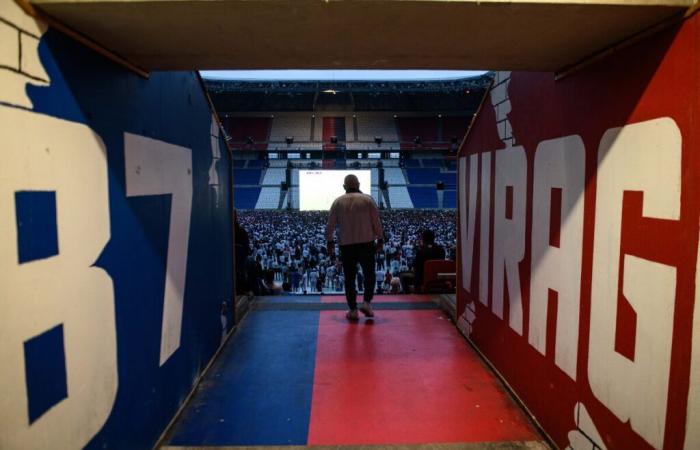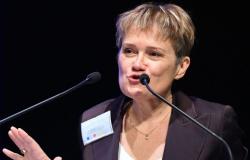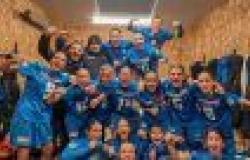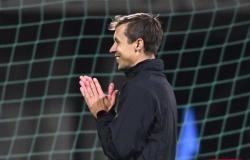
What is a Football club? “A human, local community that comes together to play football”laughs Ronan Evain, general director of Football Supporters Europe (FSE), in the face of the force of the evidence. Jean-Michel Aulas had no shame in describing his club as an entertainment business.
This file on John Textor and the finances of OL is made up of four other articles:
By espousing this American vision, the trip to the stadium found itself in competition with the cinema evening or the bowling outing, globalized activities not having the characteristic of their local roots.
With the move of its headquarters and stadium to Décines, as well as its academy to Meyzieu, OL had already cut itself off from Lyon in 2016. But, bought at the end of 2022 by American businessman John Textor, the club has shifted to a dimension even further removed from its initial vocation: not only is it now majority owned by foreign capital, when its founders in 1950 and then its successive presidents were notables Lyonnais — industrialists, doctors, traders — but it has also become a football multinational.
A sacred paradox for a club which has carved out a reputation as a champion of training, transforming the gones of Ménival (Umtiti), Mermoz (Lacazette), la Duchère (Abidal), Bron (Benzema), Vénissieux (Caqueret), Vaulx -en-Velin (Fekir) or Saint-Priest (Cherki) as great footballers.
Unnatural model
The big news is that OL is no longer truly sovereign, submerged in a fashionable model in world football: multi-ownership. Its players, its finances, its future: all are now intrinsically dependent on other clubs (Crystal Palace in England, Botafogo in Brazil, RWD Molenbeek in Belgium and Florida FC in the United States) united under the same holding company, Eagle Football Holdings. Touted by John Textor, the system is supposed to allow clubs to pull themselves up collectively: pooling of skills, economies of scale, but also pooling of players (see infographic) and even leaders.
Read also on Tribune de Lyon: “There is not enough income and not enough equity”: An economist deciphers the OL accounts
This organization was popularized around ten years ago by the City Football Group. Since then, no less than 12 clubs have started to gravitate one after the other around Manchester City, from Australia to India via Japan, Turkey and even France with ES Troyes AC. The Aube club experienced a situation betraying the absurdity of the model, by buying a player in Brazil, then loaned to Eindhoven and Girona before being sold to Manchester for a record amount… without having played a single match under the Trojan jersey!
“For the Manchester City fan, it doesn’t change much, his club is at the top of the pyramid and he benefits from the investments and players who come from other clubs. But for supporters of other clubs, that changes everything since the vocation of their club then becomes to serve the interests of another”continues Ronan Evain. And for good reason: “it is no longer the athlete who is at the heart of the club’s interests but the buying and selling of players”he whispers.
“There is nothing left to dismember”
The sale of players in a large open market therefore, or of assets. Thus OL successively separated from its American franchise OL Reign, the LDLC Arena and even its women’s section. “All the clubs in the world are setting up their women’s section and are selling theirs”wonders Ronan Evain.
However, not only will the club no longer receive subsidies from the theater – estimated at 10 to 15 million euros per year – but it will no longer be able to pride itself on having the most beautiful women’s record in the world. This lack of local roots – John Textor does not live in Lyon and still does not speak a word of French – and the distance from the place of decision-making run the risk of a lack of interest in the territory and its future. Thus the interlocutor of the mayor of Décines Laurence Fautra (LR) is the general director of the club, Laurent Prud’homme, but not the real decision-maker: John Textor.
“Textor, I don’t see it”
“I don’t think I’m his subject, observes the councilor. Every time I see him he is very respectful, but I don’t discuss the stadium with him. It was not the same with Jean-Michel Aulas, with whom it was easier to say things to each other. Of course, it was “war and peace”, we had to defend our interests. But today the relationship is very different, Textor, I don’t see it. I come across him during important matches but it’s not the same fluidity. »
Should we therefore expect new radical decisions, with potentially as harmful an impact for OL as for Eastern Lyon? “But there is nothing left to dismember, adds a fine connoisseur of OL. He sold all his assets: all that remains is the stadium and the training center but as he already has debts on it, if he sells them, it changes nothing, it clears a little of the debt. And who is going to buy a stadium? »
Read also on Tribune de Lyon: Historic loss of more than 100 million euros for Olympique Lyonnais
Beyond these economic considerations, it is a piece of heritage, which will celebrate its 75th anniversary next spring, which is in danger. To what extent? “If OL fails tomorrow, it is obviously an economic catastrophe for the people who work there, those whose business depends on it and for the supporters; but the club will leave in 5e or 6e division, and preserves his coat of arms, his palmarès »recalls Ronan Evain, also a member of the office of the National Association of Supporters (ANS). Because the particularity of French professional sport consists of supporting a private structure with an association, such that if the first were to go bankrupt, the second would take its place.
“That should alarm everyone!” »
“The model is different in England where clubs are private entities which can go bankrupt, recalls Ronan Evain. And that’s how Bury FC disappeared. It’s dramatic: 120 years of history disappearing, with the loss of the prize list, the colors… The French model is not so bad since the club license belongs to the associative base. The problem is that the latter has little influence on the management of the club and is in fact controlled by the professional structure. »
The fundamental question to ask would be to know what Textor was looking for in Lyon, to the extent that professional football is a bottomless pit from which it is almost impossible to get rich. “That should alarm everyone!” “, lance Ronan Evain. “Textor is a very nice person but he is the king of the cavalry, unlike Michèle Kang (president of the women’s OL, Editor’s note) who plays his own money »judges a good connoisseur of the club.
Read also on Tribune de Lyon: John Textor takes OL, Jean-Michel Aulas keeps control
billiard shot
Two days before the crucial meeting with the DNCG, and while a certain excitement had set in among the supporters, John Textor took a plane ride over the Bahamas… “Do we have a single example in French football of someone who would have settled permanently in the territory after the acquisition of a football club? asks Ronan Evain. Or is it a dancer? But if it was a question of having fun, would he invest in several clubs? That seems pretty unlikely to me. There is perhaps a form of bet on the deregulation of football. Does he think he will take advantage of a possible Superleague to take advantage of it? But hey it’s risky, it’s a three-cushion billiards move. »
Understanding the OL economic system
By introducing OL to the stock market in 2007, Jean-Michel Aulas familiarized Lyon supporters with a certain number of financial terms: Osrane, Oceane, DPS, Ebitda. But you now need solid economic concepts to understand the set-up that keeps OL alive.
What we must first understand from our infographic is that the money which enabled the acquisition of OL Groupe (now Eagle Football Group) by Eagle Football Holdings did not only come from the pocket of John Textor ( 310 million euros, most of which is based on the assets of the holding company) but mainly from the Ares investment fund (405 million), associated with a group of American investors (100 million).
If the businessman therefore occupies the media space, he remains dependent on the will of other actors who also sit on the board of directors. The other obvious fact is that OL is now just one club among those owned by the holding company. Certainly the most prestigious of the five, it is not the most lucrative in comparison to Crystal Palace, of which John Textor owns 45% of the shares which he seeks to sell for 270 million euros, alongside an introduction to the New York Stock Exchange in order to bring new money into the coffers.
Before that, Textor had separated from OL Women, the American franchise OL Reign and the LDLC Arena, without this money coming to reduce OL’s debt, whose outstanding debt now exceeds 500 million euros.
Finally what appears is that an internal economy has developed in accordance with the plans of the owner of OL. Transfers between clubs number in the dozens, following a hierarchy which initially benefited OL – who had Ernest Nuamah bought by Molenbeek before getting him back on loan, then bought Lucas Perri for a pittance in Botafogo– before the Brazilian club’s run in the Copa Libertadores pushed Textor to devote more of its time and the holding company’s money, to the detriment of OL’s accounts.





